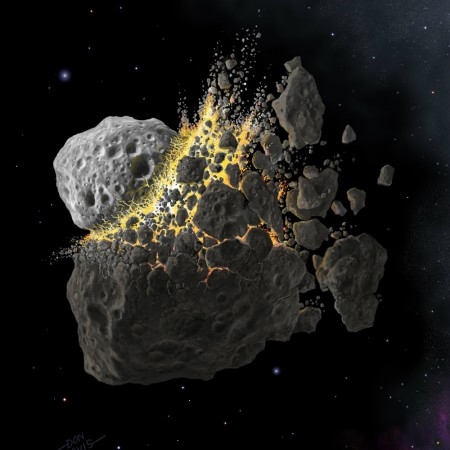NASA recently confirmed that the Trojan asteroid known as Eurybates has an orbiting natural satellite. The agency will be able to study the smaller asteroid once it visits Eurybates for its upcoming Lucy mission.
NASA plans to launch the Lucy mission in October next year. As part of the mission, the Lucy spacecraft will visit Trojan asteroids, which is a group of asteroids that orbit near the Sun and Jupiter. One of the asteroids that the mission will focus on is Eurybates.
Uncovering Eurybates' Satellite

As NASA continues to study the asteroid before the mission launches, the agency was able to uncover a surprising feature of the space rock. Through multiple observations by the Hubble Space Telescope, NASA was able to confirm that Eurybates has a natural orbiting satellite.
The satellite was first observed by Hubble in September 2018. Follow-up observations by the space telescope in December 2019 and January helped NASA confirm the presence of Eurybates' companion asteroid. According to the mission's specialists, the satellite is less bright than Eurybates, which could be the reason why it was not detected sooner.
"This newly discovered satellite is more than 6,000 times fainter than Eurybates, implying a diameter less than 1 km," Hal Levinson of the Southwest Research Institute and principal investigator for the Lucy mission said in a statement.
Studying Trojan Asteroids Through Lucy

Through the latest discovery, NASA now intends to send the Lucy mission to study both Eurybates and its satellite. They will be part of the mission's flyby encounters to study the asteroid belt moving across Jupiter's orbit around the Sun. Dubbed as Jupiter Trojan asteroids, these space rocks are known to collide with one another.
For NASA's scientists, studying these asteroids and their collisions will provide valuable information regarding the formation of space rocks and their satellites. "There are only a handful of known Trojan asteroids with satellites, and the presence of a satellite is particularly interesting for Eurybates," Thomas Statler, the NASA's program scientist for Lucy explained. "It's the largest member of the only confirmed Trojan collisional family – roughly 100 asteroids all traceable to, and probably fragments from, the same collision."









